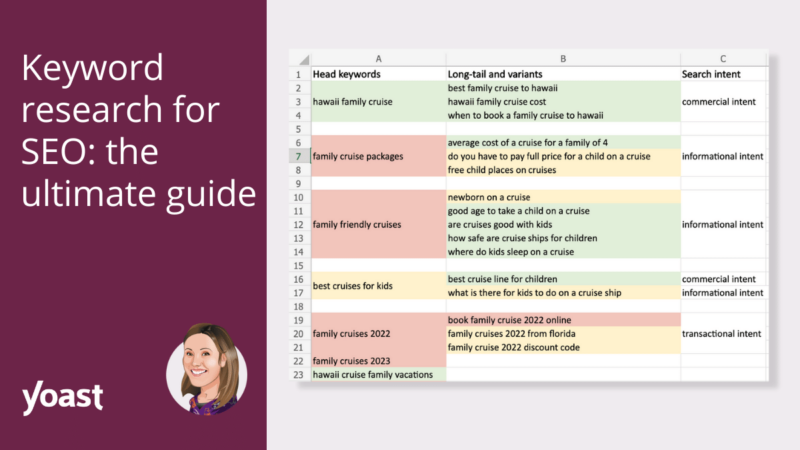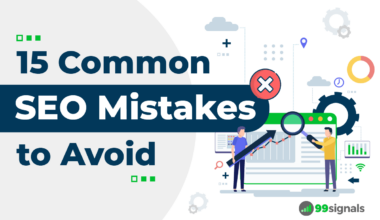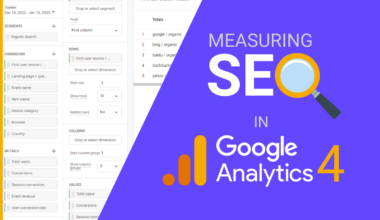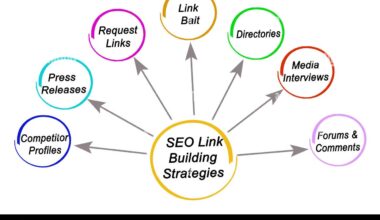Introduction to SEO Keyword Research
As a website owner, you want to make sure that your website is visible and easily discoverable by your target audience. One of the most effective ways to achieve this is through search engine optimization (SEO), where you optimize your website to rank higher on search engine results pages (SERPs). And one of the fundamental aspects of SEO is keyword research.
Keyword research is the process of identifying the words and phrases that people use to search for information related to your business. By targeting the right keywords, you can attract more organic traffic to your website and increase your chances of converting them into customers.
The goal of keyword research is to find a balance between high search volume and low competition. You want to target keywords that have a significant search volume but are not too competitive to rank for. This will give you the best chance of ranking higher on SERPs and getting more traffic to your website.
There are various methods and tools that you can use to conduct keyword research, which we will discuss in the following sections. However, before you start your research, it’s crucial to understand the intent behind the keywords you are targeting.
Understanding the intent behind the keywords is essential because it helps you create content that matches the user’s search query. There are three types of keyword intent:
-
Navigational intent:
When a user is searching for a specific website or brand. -
Informational intent:
When a user is searching for information about a particular topic or product. -
Transactional intent:
When a user is searching for a product or service with the intention of making a purchase.
By identifying the intent behind the keywords, you can create content that matches the user’s search query and provides them with the information they are looking for. This will improve your chances of ranking higher on SERPs and getting more traffic to your website.
Now that you understand the importance of keyword research and the intent behind the keywords, let’s dive into the various tools and methods that you can use to conduct keyword research.
Understanding Keyword Intent
When conducting keyword research, it’s essential to understand the intent behind the keywords you are targeting. Keyword intent refers to the reason behind a user’s search query. Understanding the intent behind a keyword will help you create content that satisfies the user’s search query and provides them with the information they are looking for.
There are three types of keyword intent that you need to be aware of:
-
Navigational intent:
This type of keyword intent is when a user is searching for a specific website or brand. For example, if a user types in “Facebook login” or “Amazon”, they are looking for a specific website or brand. When targeting navigational intent keywords, it’s important to make sure that your website is optimized for that specific brand or website. You can do this by creating landing pages that are optimized for that specific brand or website. -
Informational intent:
This type of keyword intent is when a user is searching for information about a particular topic or product. For example, if a user types in “how to lose weight fast” or “best laptops for gaming”, they are looking for information about a particular topic or product. When targeting informational intent keywords, it’s important to create content that provides the user with the information they are looking for. This can be in the form of blog posts, articles, or videos. -
Transactional intent:
This type of keyword intent is when a user is searching for a product or service with the intention of making a purchase. For example, if a user types in “buy Nike shoes online” or “best web hosting services”, they are looking for a product or service with the intention of making a purchase. When targeting transactional intent keywords, it’s important to create landing pages that are optimized for conversions. This can be in the form of product pages, sales pages, or opt-in pages.
By understanding the intent behind the keywords, you can create content that matches the user’s search query and provides them with the information they are looking for. This will improve your chances of ranking higher on SERPs and getting more traffic to your website.
In conclusion, understanding keyword intent is essential when conducting keyword research. By identifying the intent behind
Tools for Keyword Research
Keyword research is a crucial aspect of search engine optimization (SEO). To conduct effective keyword research, you need to use the right tools. There are various tools available that you can use to find the right keywords for your website. Here are some of the most popular keyword research tools:
1. Google Keyword Planner
Google Keyword Planner is a free tool that allows you to find keywords related to your business. You can enter a keyword related to your business, and the tool will generate a list of related keywords along with their search volume and competition level.
2. SEMrush
SEMrush is a popular keyword research tool that provides detailed information about your competitors’ keywords. You can use this tool to find the keywords that your competitors are ranking for and use them to optimize your website.
3. Ahrefs
Ahrefs is a comprehensive SEO tool that provides a range of features, including keyword research. You can use this tool to find the keywords that your competitors are ranking for, as well as track your own keyword rankings.
4. Moz Keyword Explorer
Moz Keyword Explorer is a powerful keyword research tool that provides in-depth keyword analysis. You can use this tool to find the right keywords for your business and understand the competition level for each keyword.
5. Keyword Tool
Keyword Tool is a free keyword research tool that allows you to find long-tail keywords related to your business. You can enter a keyword related to your business, and the tool will generate a list of related long-tail keywords.
When selecting a keyword research tool, it’s important to consider your budget and the features that you need. Some tools are free, while others require a subscription. It’s also important to choose a tool that provides accurate and up-to-date information.
In conclusion, keyword research is a vital aspect of SEO, and using the right tools can make a significant difference in your results. By using these tools, you can find the right keywords for your business, attract more organic traffic to your website, and increase your chances of converting them into customers.
Analyzing and Selecting Keywords
After understanding the intent behind the keywords and using the right tools for keyword research, the next step is to analyze and select the keywords that you want to target. Here are the steps to analyzing and selecting keywords:
1. Analyze the search volume and competition level
When conducting keyword research, you want to find keywords that have a significant search volume but are not too competitive to rank for. You can use tools like Google Keyword Planner, SEMrush, and Ahrefs to analyze the search volume and competition level for each keyword.
2. Consider the relevance of the keywords
It’s important to choose keywords that are relevant to your business and the content on your website. If you target irrelevant keywords, you will attract the wrong audience to your website, which will hurt your conversion rates.
3. Look for long-tail keywords
Long-tail keywords are longer and more specific than general keywords. They have less search volume but are less competitive to rank for. Targeting long-tail keywords can help you attract a more targeted audience to your website.
4. Analyze your competitors’ keywords
You can use tools like SEMrush and Ahrefs to analyze the keywords that your competitors are ranking for. By analyzing your competitors’ keywords, you can identify gaps in your content and find keywords that you may have missed.
5. Prioritize user intent
When selecting keywords, it’s important to prioritize user intent. You want to choose keywords that match the user’s search query and provide them with the information they are looking for. This will improve your chances of ranking higher on SERPs and getting more traffic to your website.
6. Create a keyword list
After analyzing and selecting your keywords, create a list of the keywords that you want to target. Organize the keywords by relevance and search volume.
In conclusion, analyzing and selecting keywords is a crucial aspect of SEO. By following these steps, you can identify the right keywords for your business, attract more organic traffic to your website, and increase your chances of converting them into customers. Remember to prioritize user intent, choose relevant keywords, and analyze the search volume and competition level before selecting your keywords.
Final Thought: Implementing Keyword Research for SEO Success
Keyword research is a vital aspect of SEO, and implementing it effectively can significantly improve your website’s visibility and traffic. Here are some tips for implementing keyword research for SEO success:
1. Create high-quality content
Once you have identified the right keywords for your business and content, it’s essential to create high-quality content that matches the user’s search query. This will improve your chances of ranking higher on SERPs and getting more traffic to your website.
2. Optimize your website
Optimizing your website for the keywords you are targeting is essential for SEO success. You can optimize your website by including the keywords in your title tags, meta descriptions, header tags, and content.
3. Monitor and adjust your strategy
SEO is an ongoing process, and it’s important to monitor and adjust your strategy based on the results you are getting. You can use tools like Google Analytics and Google Search Console to track your website’s traffic and keyword rankings.
4. Focus on user intent
When implementing keyword research, it’s crucial to focus on user intent. You want to create content that matches the user’s search query and provides them with the information they are looking for. This will improve your chances of ranking higher on SERPs and getting more traffic to your website.
5. Stay up-to-date with SEO trends
SEO is a constantly evolving field, and it’s important to stay up-to-date with the latest trends and best practices. You can do this by following industry blogs, attending conferences, and networking with other SEO professionals.
In conclusion, implementing keyword research for SEO success requires a combination of the right tools, strategies, and techniques. By creating high-quality content, optimizing your website, monitoring and adjusting your strategy, focusing on user intent, and staying up-to-date with SEO trends, you can improve your website’s visibility and attract more organic traffic to your website.






















